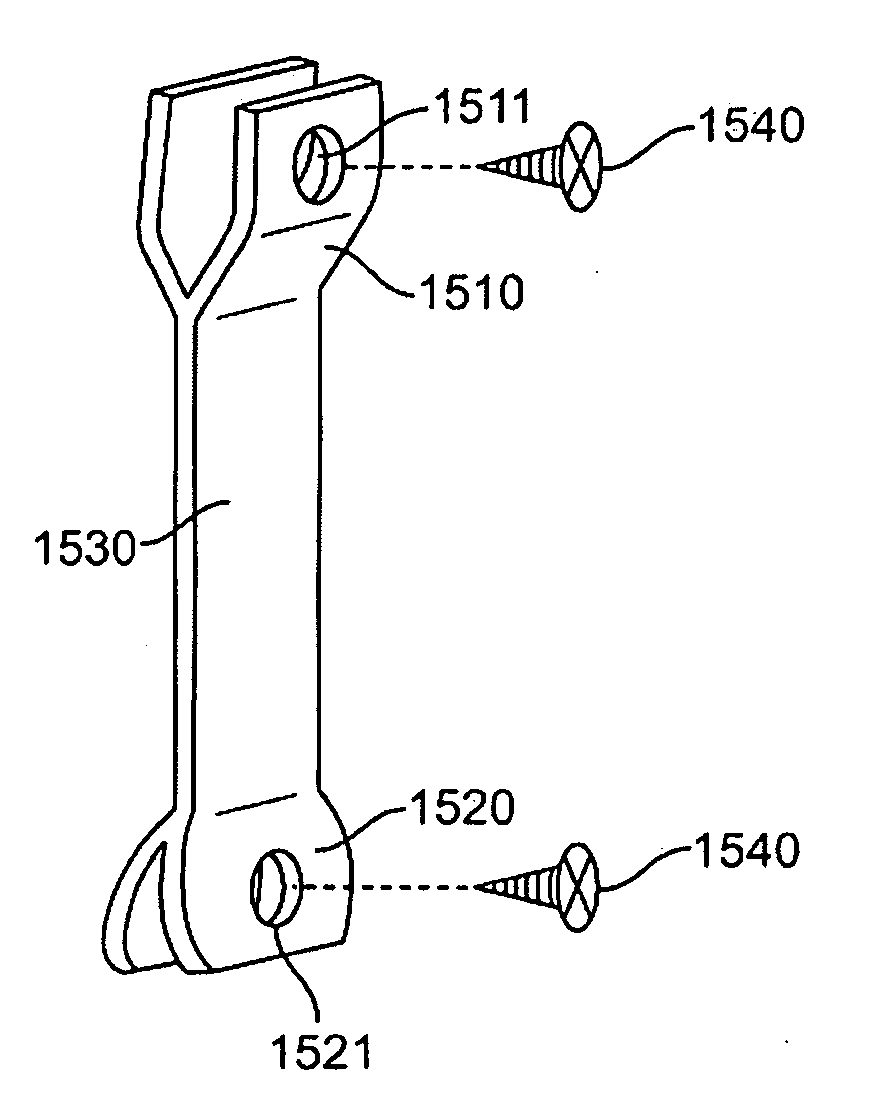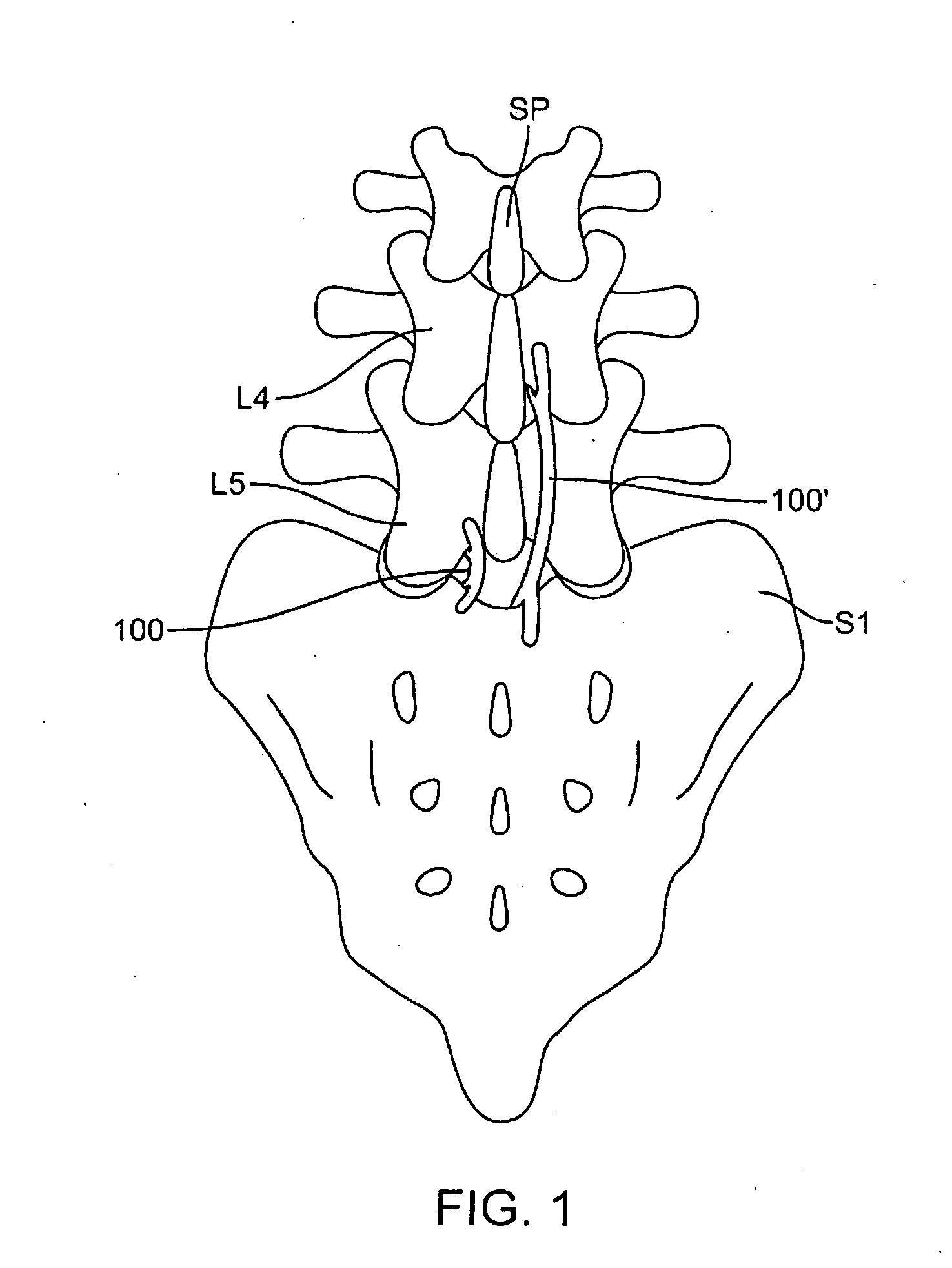Surgical method and apparatus for treating spinal stenosis and stabilization of vertebrae
a spinal stenosis and spinal canal technology, applied in the field of spinal canal prosthesis, can solve the problems of deviation from the normal spinal structure, damage to the spine and its components, and no longer articulating or aligning the vertebrae with each other, so as to relieve pain and discomfort, and distract and stabilize the spinal column segments.
- Summary
- Abstract
- Description
- Claims
- Application Information
AI Technical Summary
Benefits of technology
Problems solved by technology
Method used
Image
Examples
Embodiment Construction
[0048]Although the detailed description contains many specifics, these should not be construed as limiting the scope of the invention but merely as illustrating different examples and aspects of the invention. It should be appreciated that the scope of the invention includes other embodiments not discussed in detail above. Various other modifications, changes and variations which will be apparent to those skilled in the art may be made in the arrangement, operation and details of the methods and systems of the present invention disclosed herein without departing from the spirit and scope of the invention as described.
[0049]The present invention is a prosthetic device for distracting spinal column segments in the lumbar and the lumbar-sacral regions by engaging the spinal column segments. Engagement occurs with two engagement arms that are configured to distract the targeted spinal segments to relieve pain and discomfort associated with spinal stenosis or other spinal disorders. Alth...
PUM
 Login to View More
Login to View More Abstract
Description
Claims
Application Information
 Login to View More
Login to View More - R&D
- Intellectual Property
- Life Sciences
- Materials
- Tech Scout
- Unparalleled Data Quality
- Higher Quality Content
- 60% Fewer Hallucinations
Browse by: Latest US Patents, China's latest patents, Technical Efficacy Thesaurus, Application Domain, Technology Topic, Popular Technical Reports.
© 2025 PatSnap. All rights reserved.Legal|Privacy policy|Modern Slavery Act Transparency Statement|Sitemap|About US| Contact US: help@patsnap.com



